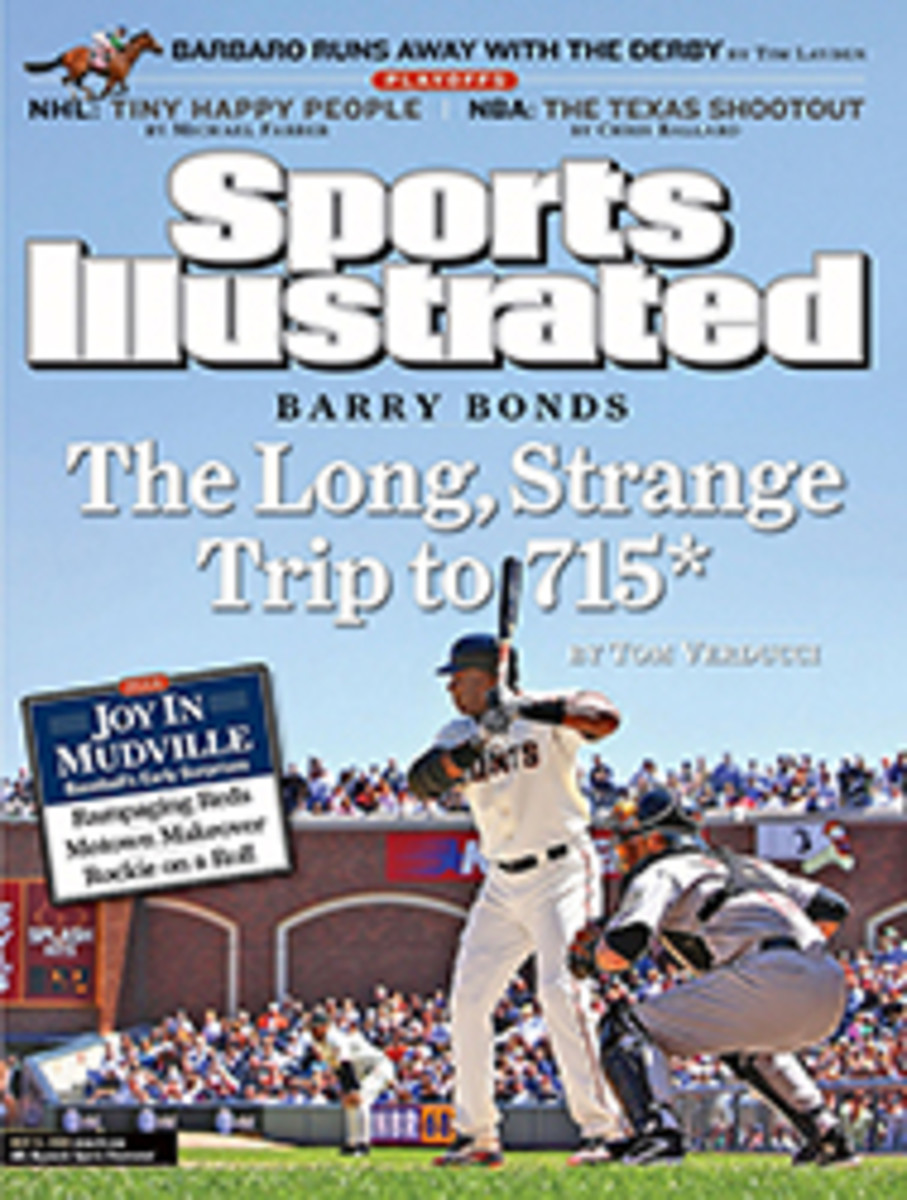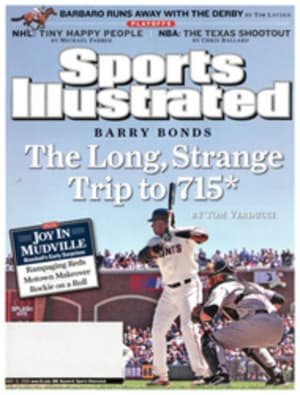
The Unvarnished Ruth
THE BIG BAM
by LeighMontville
Doubleday, 366pages, $26.95
Three years ago,while taking aim at Babe Ruth's career hitting marks, Barry Bonds issued thisastonishing fatwa: "I got [Ruth's] slugging percentage, I'll get his homeruns, and that's it. Don't talk about him no more!"
But even withBonds on the verge of eclipsing Ruth with his 715th home run, it's clear thatpeople will never stop talking about the Babe. Ruth's life was so endlesslyfascinating that succeeding generations continue to raise new questions aboutit and argue over the answers. Was he the epitome of the American Dream, apoor, unwanted waif who became a wealthy superstar through sheer talent andhard work? Or was he a Dionysian nightmare, a broodhog of a man who gorgedhimself on food, drink, cigars and females until his appetites destroyedhim?
According toLeigh Montville's vivid, intimate account, the answer to both questions is aringing "yes." There's little new information here, but it's surprisinghow fresh, riveting and by turns delightful and gruesome the Babe's familiarstory is in this skillful retelling.
Montville, aformer SI senior writer, admits that most of his material is gleaned from otherworks, including Robert Creamer's comprehensive Babe: The Legend Comes to Life.But Montville's unique voice--like that of a lovable, hammy sports-barraconteur--makes old yarns seem new. "The Babe in the baths was the bestscene," he writes. "He would arrive in a robe 'the dimensions of anordinary circus tent.'" Ruth would take a seat in the scalding water, hisskin turning pink, then red, then redder, until he looked so like a giantlobster that Yankees teammate Joe Bush would call out, "More steam! ... Istill don't think he's done!"
What mostdistinguishes the book, however, is Montville's earnest effort to discover whatit felt like to be Babe Ruth--to be born in a slum known as Pigtown, where thedeath squeals of hogs rose most of the day from the nearby slaughterhouses; tohave a mother who evidently suffered from a serious mental illness; to bediscarded at age seven by a saloonkeeper father and sent to St. Mary'sIndustrial School for Orphans, Delinquent, Incorrigible and Wayward Boys.
The glimpses intoRuth's life that Montville has assembled are harrowing. Years after Ruth leftSt. Mary's, a visitor took a tour of the school and found one room filled withterrifying leather lashes. "These," he was proudly told, "are thestraps we used on Babe Ruth." More painful, though, was the nickname Ruthwas given at the school: Niggerlips. Montville reckons that Ruth "heard then word more times in his childhood than ... any African-American slugger whochased his records ever did."
What, then, didit feel like for this unwanted boy, who once said his "one dream was to owna bicycle," to suddenly find himself rich and desired beyond his wildestimaginings? What were his sensations as he sat in a brothel, guzzling champagnewith prostitutes? What was it like to drive with him in his giant Packard downManhattan's Riverside Drive at the outrageous speed of 26 miles per hour? (Ruthactually spent an afternoon in jail for that hot-rodding.) And how did Ruthfeel about the death of his first wife, Helen--a woman he treated "morelike a servant or a slave than a wife," according to a neighbor--who wasincinerated in a suspicious fire, just three months before he married hislongtime mistress, Claire?
The answers tothose questions can never be known for sure, but in Montville's excitingtelling, we get the next best thing.
Handled with Care
A WRITER'S LIFE
by Gay Talese
Alfred A. Knopf, 430 pages, $26.00
Sports fans, and sportswriters, are not famous forcompassion--least of all where vanquished foes are concerned. So on July 10,1999, as the United States women's soccer team won a thrilling World Cup titleover China at the Rose Bowl, few Americans gave a thought to Liu Ying, themidfielder whose blocked penalty shot proved to be the decisive miss. But asGay Talese, a renowned author who began his career as a sports reporter,watched the victory celebration on TV, he could think of no one else.
It occurred to Talese that "never in the historyof China had a single person so suddenly been embarrassed in front of so manypeople." How could such an experience be endured? Talese set out to findLiu, hoping to tell her story.
What follows is a strange, picaresque journey, forTalese follows the whims of his curiosity from one subject to the next--fromNew York City restaurants to interracial sex to the Lorena Bobbit case, to namea few--so that, in the end, there's actually very little in the book about Liu.Instead, readers are treated to remarkable tales about love, sex, race,violence, creativity and, at regular intervals, sports. It would be adisorganized mess in the hands of a less skilled author, but Talese, a tailor'sson, stitches this crazy quilt together with a single thread--compassion.
PHOTO
GINA HOUSEMAN (RUTH BOOK)
PHOTO
BETTMANN/CORBIS
FREEWHEELER The larger-than-life Babe was by turns disciplined and gluttonous.
PHOTO
ERICK W. RUSSO (TALESE BOOK)

